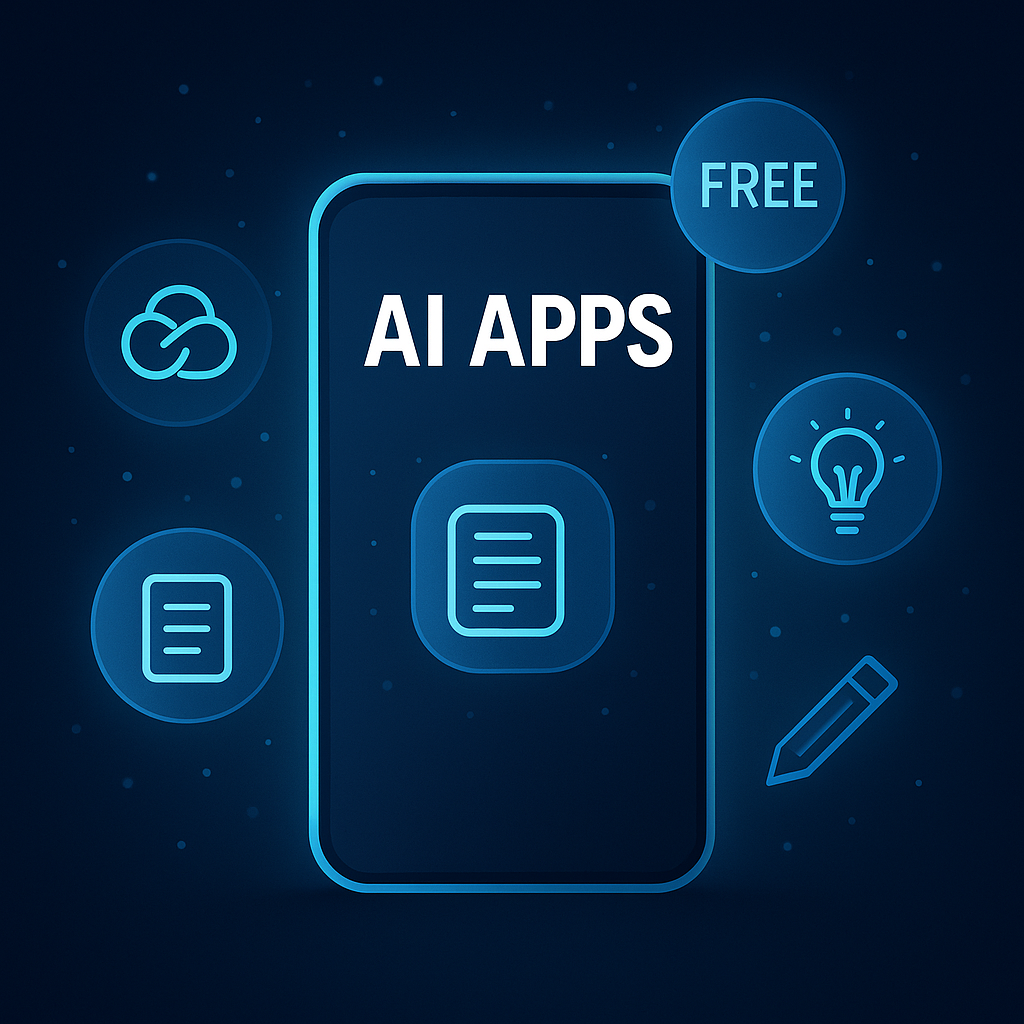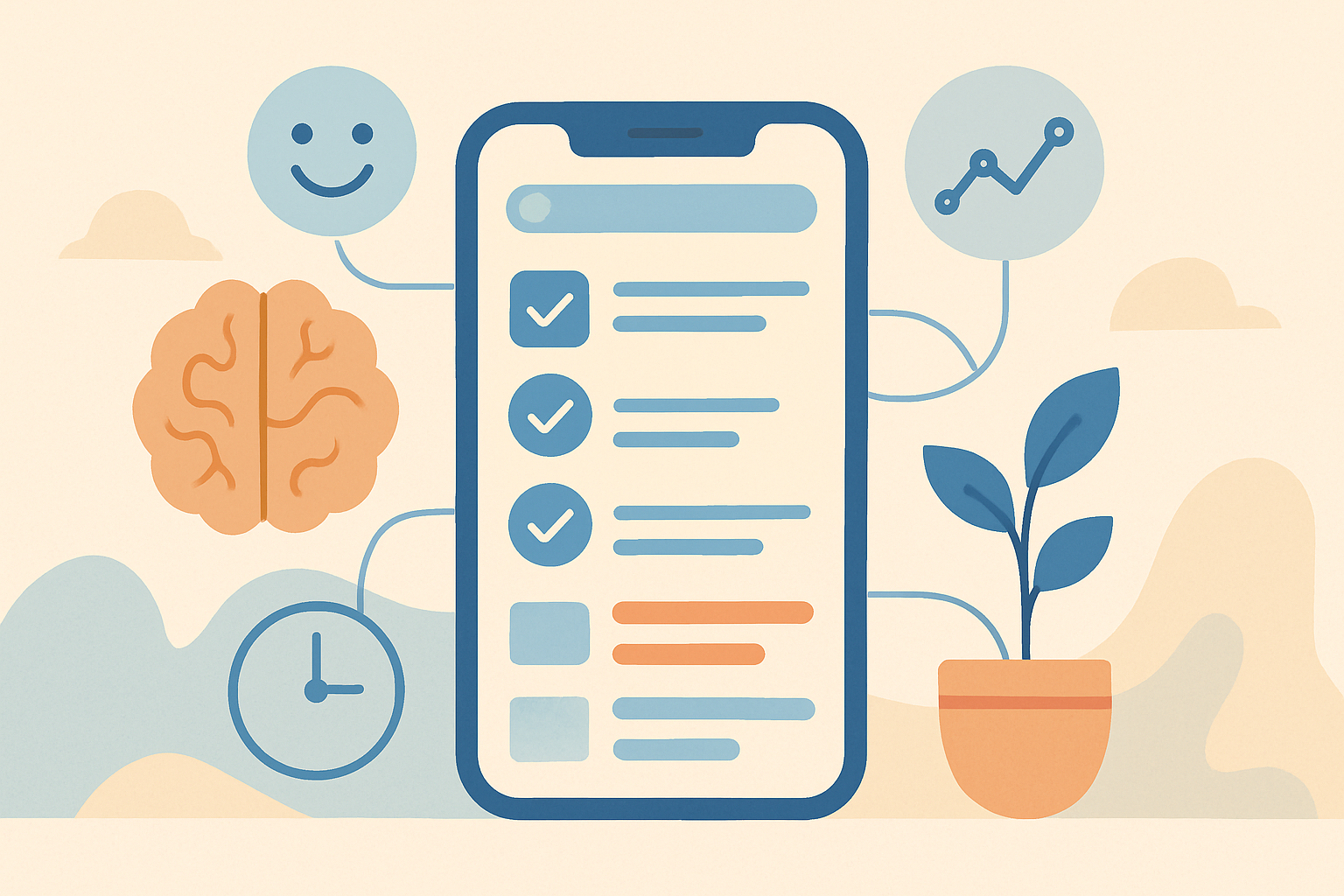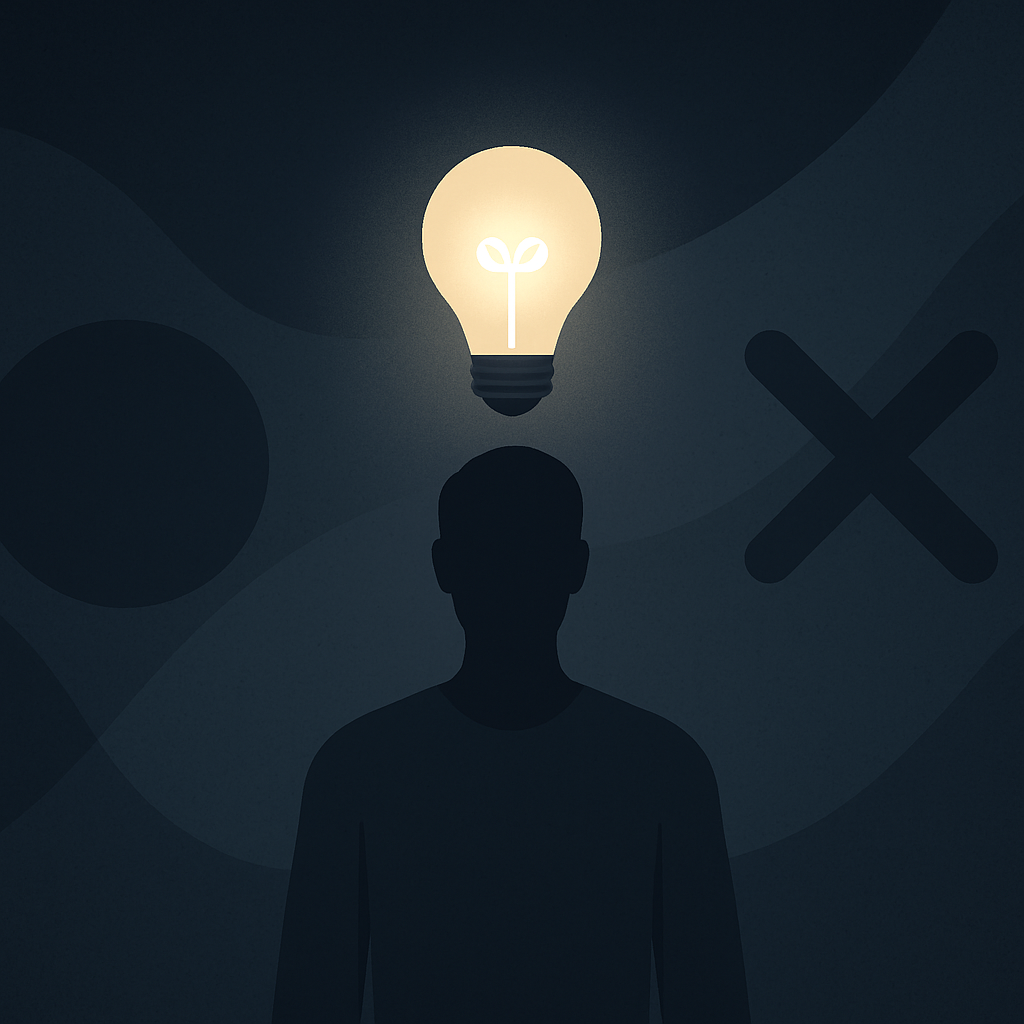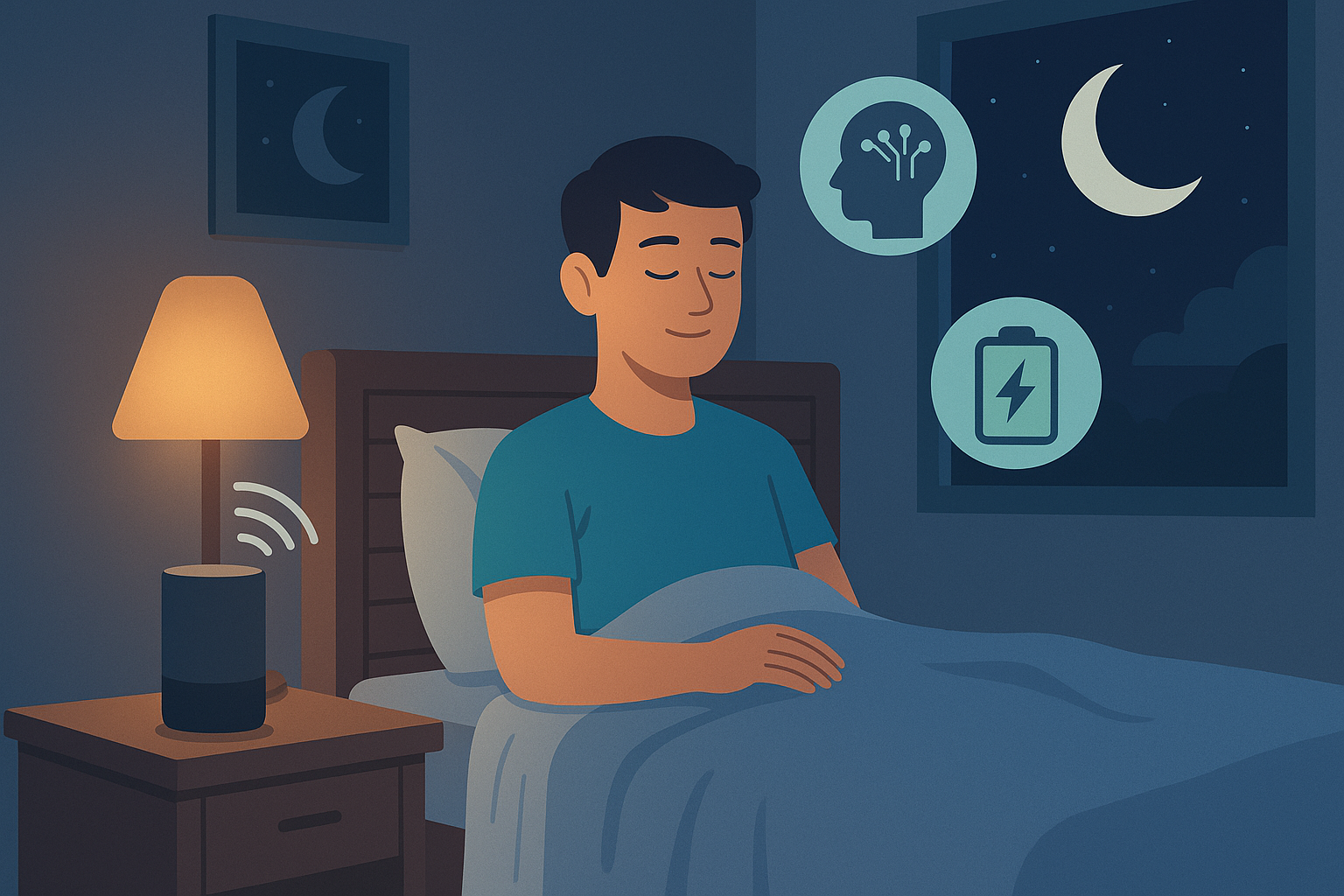Artificial intelligence has become the backbone of modern productivity. But while most users assume that premium plans mean better performance, 2025 tells a different story — some of the most effective AI apps today are completely free.
The market has matured. Open-source frameworks, freemium innovation, and user-driven ecosystems have created powerful tools accessible to everyone. What’s changed is not the price tag, but the intelligence behind the software.
This article explores the free AI apps that rival, and in some cases outperform, their paid counterparts — across writing, automation, creativity, and data productivity.

The Rise of Free Intelligence
A decade ago, free software meant limited functionality and intrusive ads. Today, free AI apps often emerge from the same machine learning engines used by enterprise systems. The difference lies in accessibility and openness.
Companies like OpenAI, Hugging Face, and Stability AI have democratized access to models that used to cost thousands to license. Developers now build streamlined applications on top of these engines, prioritizing performance and usability over profit.
As a result, many paid apps are simply rebranded interfaces over open technology — while the original, free tools remain faster and more flexible.
Why Free AI Apps Can Be Better
Paid software often spends resources on marketing, integrations, and interface polish. Free AI apps, especially open-source ones, channel their energy into one thing: performance.
These tools thrive on user feedback and community innovation. Frequent updates, transparency in development, and strong model optimization make them surprisingly powerful. In many cases, they even integrate better with external workflows due to their open APIs.
Think of them as lean, intelligent systems — built by creators, for creators.
How to Evaluate AI Apps
When analyzing AI apps, it’s less about the number of features and more about three key metrics:
| Metric | Why It Matters | Example Insight |
|---|---|---|
| Latency | Speed of response | Determines whether the app feels instant or delayed |
| Accuracy | Precision of output | Impacts text quality, image detail, or data reliability |
| Adaptability | How well it learns user patterns | Measures personalization and long-term value |
The best free apps in 2025 excel in all three. They perform faster, stay lightweight, and often integrate more smoothly than enterprise-grade competitors.
Real-World Examples of Free AI Apps That Compete
Take Perplexity AI, for example — a free AI-powered search engine that consistently outperforms traditional browsing. Unlike paid assistants locked behind subscriptions, Perplexity uses real-time web data and generates citations for every claim.
Then there’s Leonardo AI, a free generative image tool that rivals Midjourney for creative professionals. Its fast model switching, batch rendering, and transparent training approach make it ideal for designers seeking control without subscription costs.
In the productivity space, Notion AI Free Tier still provides access to writing, summarizing, and task automation features that cover 90% of what paid users need. For solo professionals, it’s often more than enough.
Even ChatGPT Free (GPT-3.5) remains one of the most efficient AI apps for drafting, brainstorming, and analysis — especially when paired with automation tools like Zapier or Make.
The trend is clear: free no longer means “basic.” It means optimized for real use.
A Practical Workflow with Free AI Apps
Imagine this workflow powered entirely by free AI tools:
- You brainstorm content ideas with ChatGPT Free.
- Then, refine them visually in Leonardo AI or Canva AI Free.
- Next, automate content scheduling through Make or Zapier Free Plan.
- Finally, use Perplexity AI to fact-check and source your references before publishing.
This setup — costing $0 — rivals professional AI stacks worth hundreds per month. The difference lies in integration and discipline, not budget.
Example:
Alex, a solo content creator, built his entire workflow using free AI apps. After switching from multiple paid platforms, his total monthly spend dropped from $97 to $0, while output increased by 25%. His secret? Using the right tools in the right order.
Table: Free AI Apps That Beat Paid Plans
| Category | Free AI App | Competes With | Key Advantage |
|---|---|---|---|
| Search & Research | Perplexity AI | ChatGPT Plus, Bing AI | Live data with citations |
| Writing | Notion AI Free | Jasper, Copy.ai | Natural tone, contextual memory |
| Image Generation | Leonardo AI | Midjourney, DALL·E 3 | Free HD renders, fine control |
| Automation | Make / Zapier Free | n8n, Automate.io | Multi-step integrations |
| Creativity | Canva AI | Adobe Firefly | Fast templates, AI-assisted edits |
| Coding | Hugging Face Spaces | GitHub Copilot | Open models, free deploys |
| Summarization | ChatGPT Free / Perplexity | Claude, Gemini | Reliable results, zero cost |
The ecosystem has evolved — the smartest AI apps are not locked behind paywalls anymore.
The Philosophy Behind “Free AI”
Open AI ecosystems thrive because they align with the natural evolution of intelligence itself: collaborative, adaptive, and shared. The global developer community improves models faster than any single corporation can.
For creators and entrepreneurs, this means freedom — the ability to build, test, and grow without budget limitations. Free AI isn’t a compromise; it’s a creative movement.
Future Outlook: The Rise of AI Cooperatives
By 2026, we’ll likely see hybrid models where free AI apps connect into decentralized “AI cooperatives.” Each app specializes — text, image, logic, or data — and users combine them fluidly. These networks will outperform traditional SaaS models by prioritizing efficiency over subscription revenue.
Your “productivity suite” will no longer come from one company but from a constellation of AI-driven tools communicating through shared protocols.
Conclusion
Free doesn’t mean inferior — not anymore. The best AI apps of 2025 rival enterprise solutions by focusing on precision, accessibility, and intelligence.
Whether you’re a writer, designer, or strategist, the future of productivity lies not in how much you pay, but in how well your tools think with you.
True innovation is no longer gated by price. It’s defined by access.
Further Reading & Related Insights
Internal link:
- Notion AI vs ClickUp AI: Which Wins? — Compare two of the most popular AI-powered productivity tools shaping 2025.
External links:
Blog
This section provides an overview of the blog, showcasing a variety of articles, insights, and resources to inform and inspire readers.
-

AI Habit Tracking and the New Rhythm of Modern Self-Improvement
AI Habit Tracking. Progress used to depend on discipline. Now, it depends on data.…
-

AI Decision Making and the New Discipline of Intentional Living
AI Decision Making. Every “yes” has a cost. Every time you agree to something…
-

The Perfect AI Night Routine to Sleep Better and Think Smarter
AI Night Routine. Your morning doesn’t begin when you wake up — it begins…
